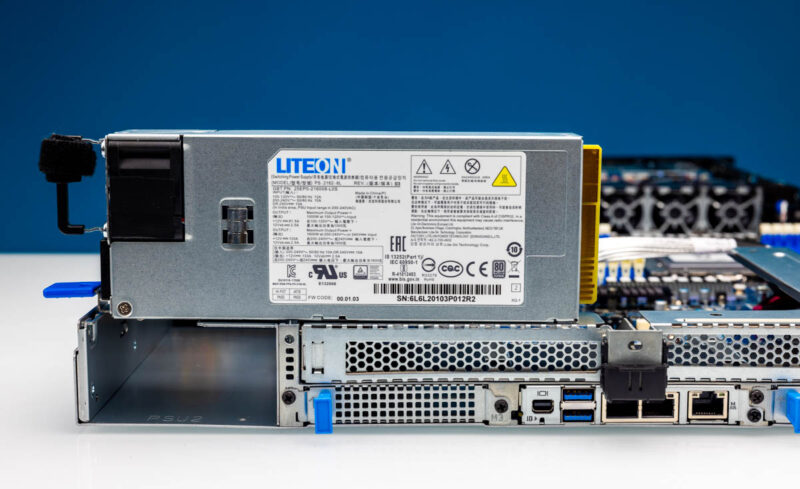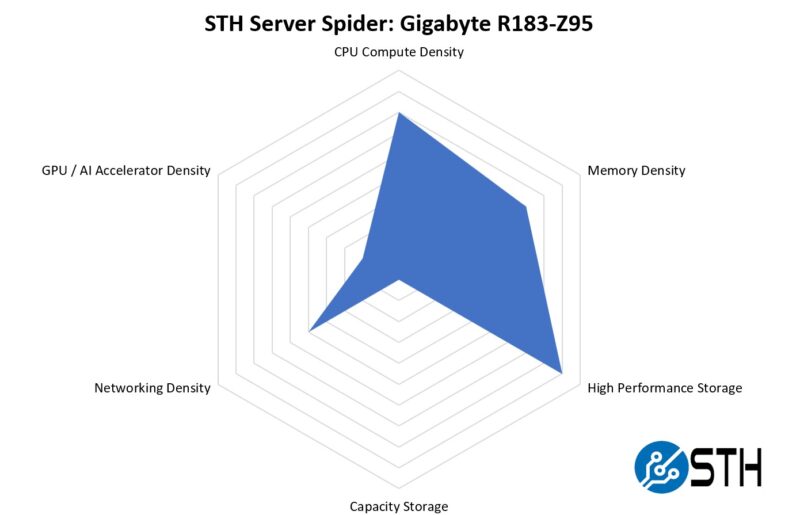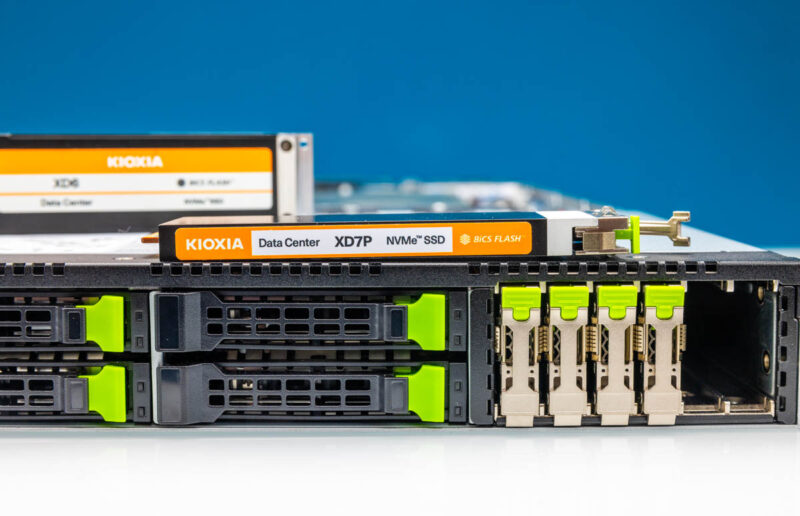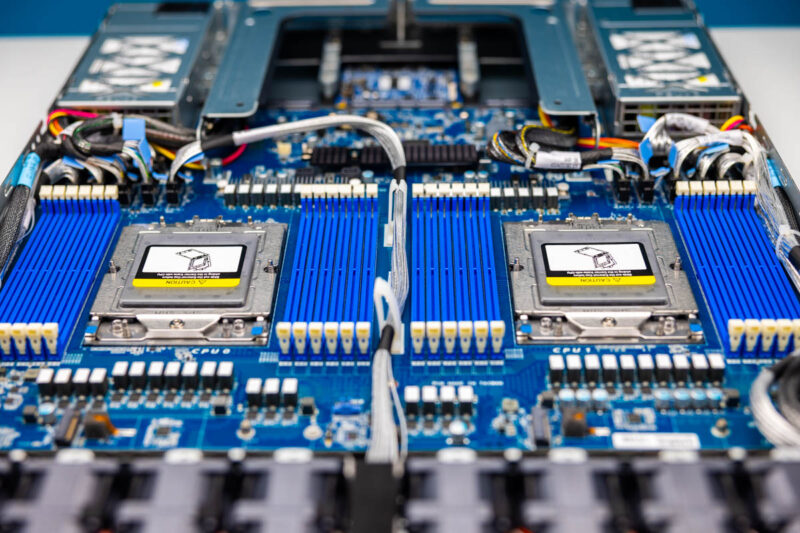Gigabyte R183-Z95 Power Consumption
The system comes with redundant 1.6kW power supplies. For most, this is going to be plenty for a server like this.

At idle we saw power consumption in the 150W range. Under load, at 300W cTDP we were running just under 800W maximum. At 400W cTDP on the CPUs we were running closer to 1kW.
Of course, there is a lot of expansion capability we are not using here. Adding 75W add-in cards, OCP NICs, and hotter drives can bring those totals up. The 1.6kW power supplies are big, but not too big for a system like this.
STH Server Spider: Gigabyte R183-Z95
In the second half of 2018, we introduced the STH Server Spider as a quick reference to where a server system’s aptitude lies. Our goal is to start giving a quick visual depiction of the types of parameters that a server is targeted at.

This server is really interesting. It can handle 128 cores per socket or 256 threads making it a fairly dense compute platform. It also skips the capacity 3.5″ storage for extra SSD storage with the E1.S and 2.5″ front storage. It is certainly possible to get denser in 2U 4-node systems for compute and in full E1.S/ E1.L systems, but this is a very dense mix.
Final Words
To us, the standout Gigabyte R183-Z95 feature is the storage capability. With three internal M.2 drives for boot in addition to eight 2.5″ drive bays and six E1.S 9.5mm drive bays, one can put 17 SSDs into this system without having to use PCIe slots. That is really neat for a 1U server.

Using the AMD Socket SP5 gives those buying these systems a lot of room for customization as well. One can use general-purpose AMD EPYC Genoa for up to 192 cores/ 384 threads, Bergamo for 256 cores/ 512 threads, or Genoa-X for GB-era levels of L3 cache.

There is probably some wisdom to using 2U servers these days to maximize I/O given how much connectivity modern server platforms have. At the same time, Gigabyte has managed to build an extremely flexible 1U server that takes advantage of almost everything AMD’s platform has to offer.




Server power usage uptick over time “The power supplies at either side are LiteOn 1.6kW units”…Ok some very old (circa 2015+- 1 year) 2U/4Node dual-socket Xeon, 16 DIMM slots, 12 total drive slots (3.5”) servers that I have as cannon fodder for my home lab have two 1,620 Watt power supplies.
Not dissing this very cool new 1U beastie, and its a core monster compared to those old Xeons, but that’s about 2X Watts per 1U over ~8 years. So yeah way ahead with the new beast on lower Watts-per-core, but only filling that same rack at 50% of the slots…Interesting calculus.
Yes, the most recent chips are certainly changing the density of data centers dramatically. Considering a single rack usually maxes out somewhere around 20kW, being able to hit that in just over 12U is pretty wild.
But we are now talking about EPYC 96-core monsters with 384MB of L3 cache, 2 of which are 25% faster than 8 E5-2699 v4’s from 2016.
I think we will see some big changes in how datacenters run things with this type of density, and I, for one, am all for it.